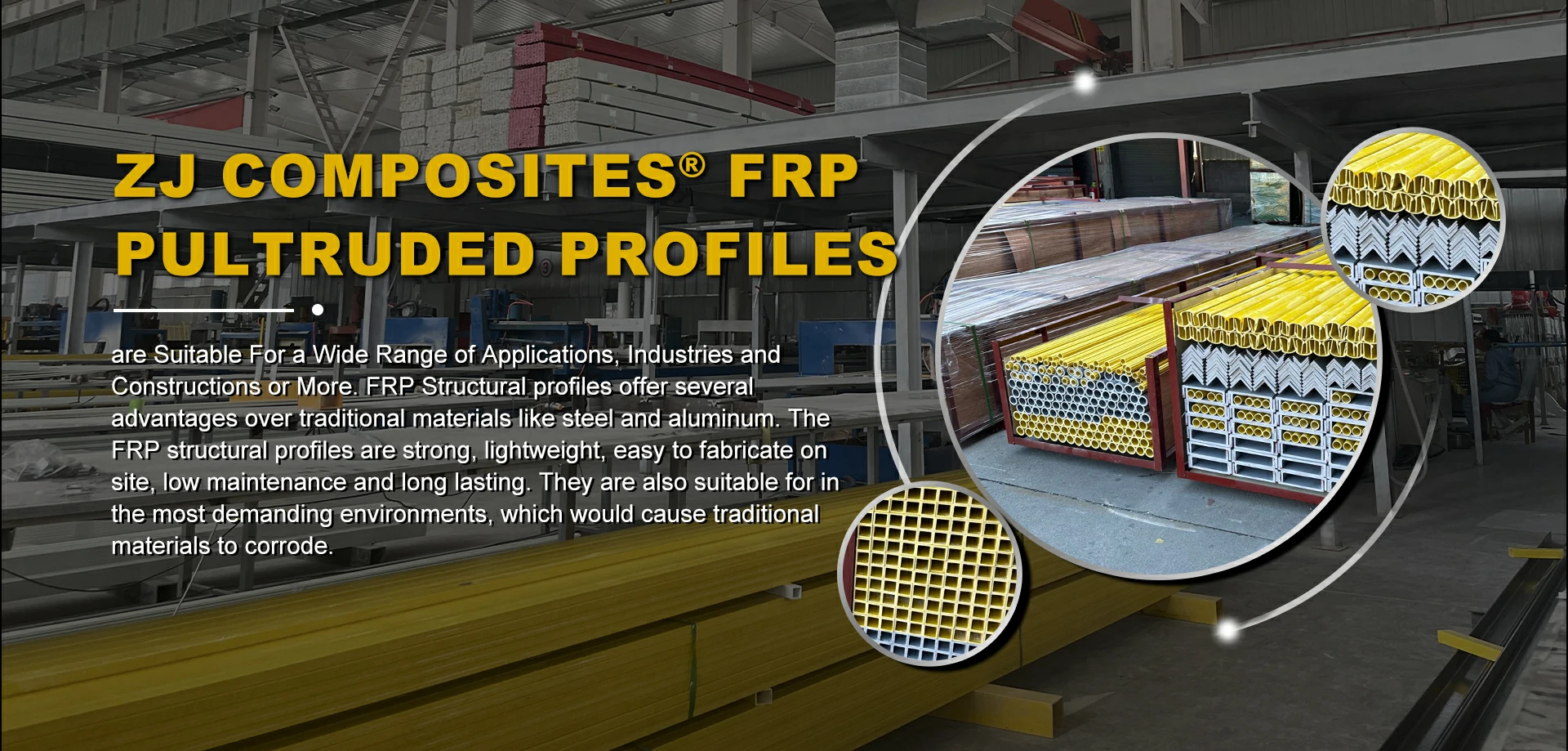loading...
- No. 9, Xingyuan South Street, Dongwaihuan Road, Zaoqiang County, Hengshui, Hebei, China
- admin@zjcomposites.com
- +86 15097380338
- Welcome to visit our website!
High-Quality FRP Platform Grating Solutions
Understanding FRP Platform Grating A Versatile Solution for Modern Infrastructure
FRP (Fiber Reinforced Polymer) platform grating has emerged as an innovative and versatile solution for various industrial and commercial applications. This composite material, made from a combination of fibers, resin, and other additives, offers a range of advantages over traditional materials like steel and aluminum, making it an increasingly popular choice in many sectors.
Understanding FRP Platform Grating A Versatile Solution for Modern Infrastructure
In addition to its lightweight properties, FRP platform grating is highly resistant to corrosion and chemical damage. In environments prone to harsh conditions, such as chemical plants, wastewater treatment facilities, and marine applications, FRP demonstrates exceptional durability, extending the lifespan of the grating and reducing maintenance costs over time. Unlike steel, which may rust or degrade when exposed to moisture and aggressive chemicals, FRP maintains its integrity and appearance, ensuring a long-lasting solution.
frp platform grating

Another key feature of FRP grating is its slip-resistant surface, which enhances safety for users in various environments. The textured surface of FRP grating provides excellent traction, reducing the risk of slips and falls. This makes it an ideal choice for walkways, platforms, and industrial floors where safety is paramount.
Moreover, FRP grating is highly customizable. It can be manufactured in various colors, sizes, and designs to suit specific project requirements. This flexibility enhances the aesthetic appeal of structures while ensuring functionality. Whether used for catwalks, platforms, or temporary staging, FRP grating can be tailored to fit specific applications.
Fire resistance is another important characteristic of FRP materials. Many FRP gratings meet stringent fire safety standards, making them suitable for use in environments where fire hazards are a concern. This property, combined with other functional benefits, makes it an ideal choice for sectors like construction, transportation, and energy.
In conclusion, FRP platform grating represents a modern, efficient solution for a wide array of applications. Its lightweight, corrosion-resistant, slip-resistant, customizable, and fire-resistant properties make it a compelling alternative to traditional materials. As industries increasingly prioritize safety and sustainability, FRP grating is poised to become a go-to choice for architects, engineers, and facility managers looking to enhance their projects' performance and longevity.
-
The Rise of FRP Profiles: Strong, Lightweight, and Built to LastNewsJul.14,2025
-
SMC Panel Tanks: A Modern Water Storage Solution for All EnvironmentsNewsJul.14,2025
-
GRP Grating: A Modern Solution for Safe and Durable Access SystemsNewsJul.14,2025
-
Galvanized Steel Water Tanks: Durable, Reliable, and Ready for UseNewsJul.14,2025
-
FRP Mini Mesh Grating: The Safer, Smarter Flooring SolutionNewsJul.14,2025
-
Exploring FRP Vessels: Durable Solutions for Modern Fluid HandlingNewsJul.14,2025
-
GRP Structures: The Future of Lightweight, High-Performance EngineeringNewsJun.20,2025
